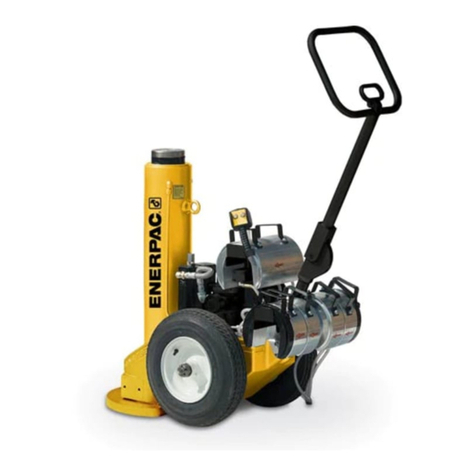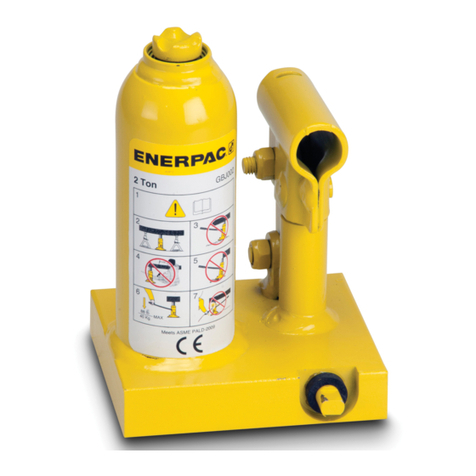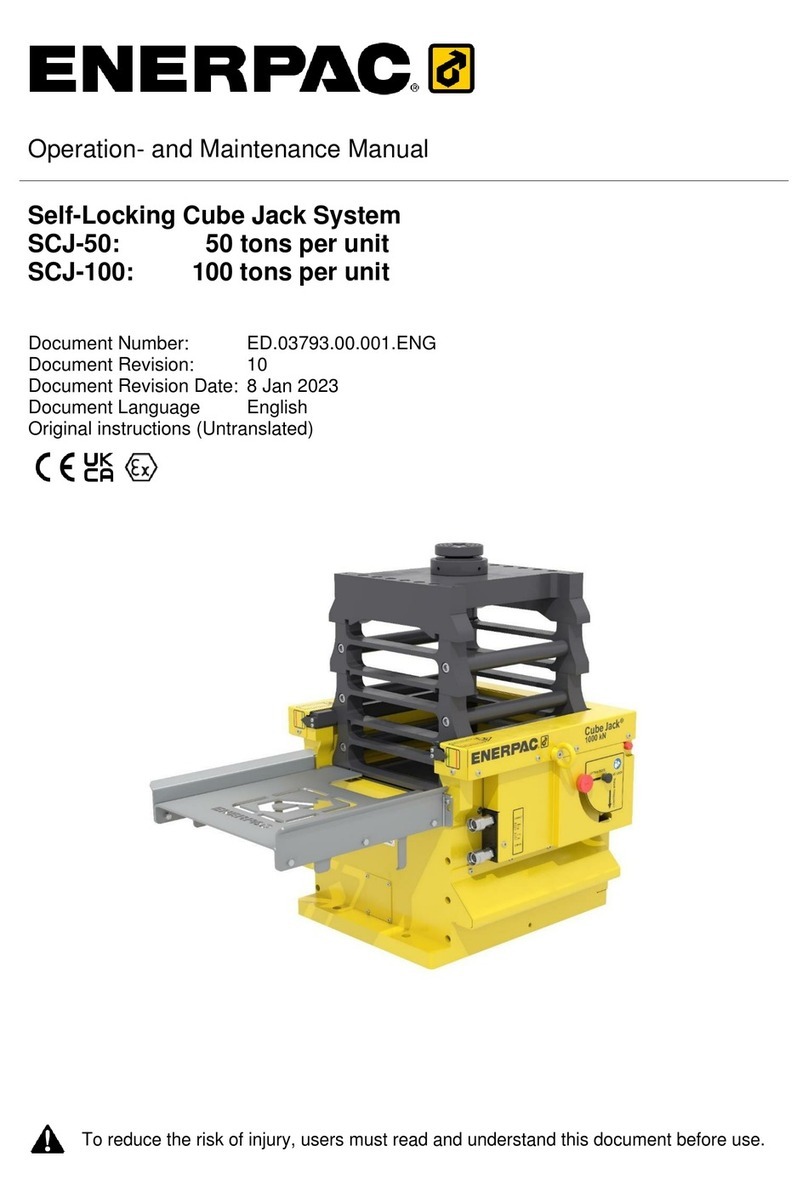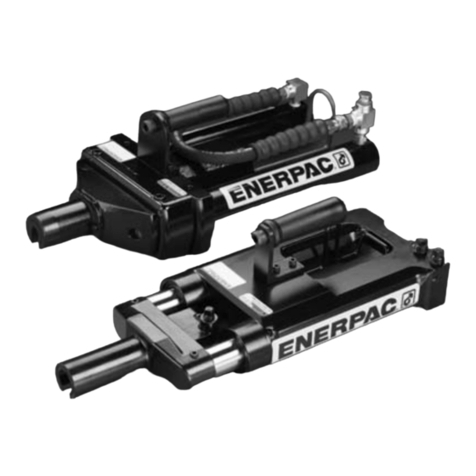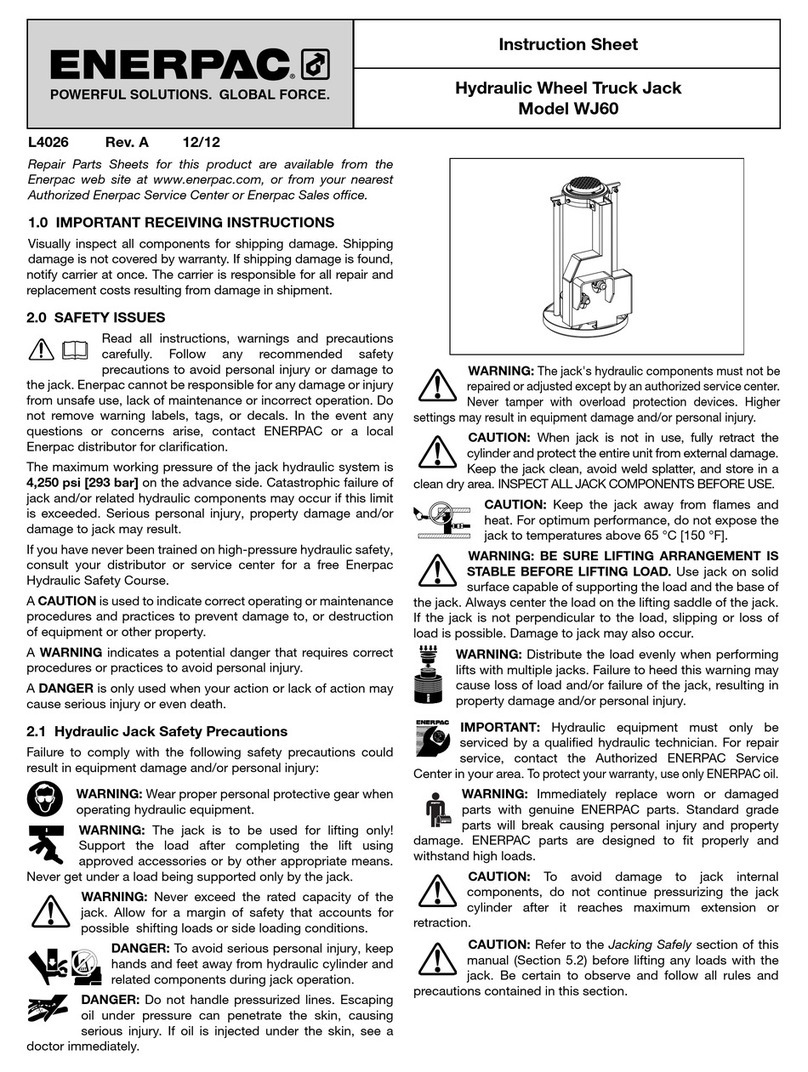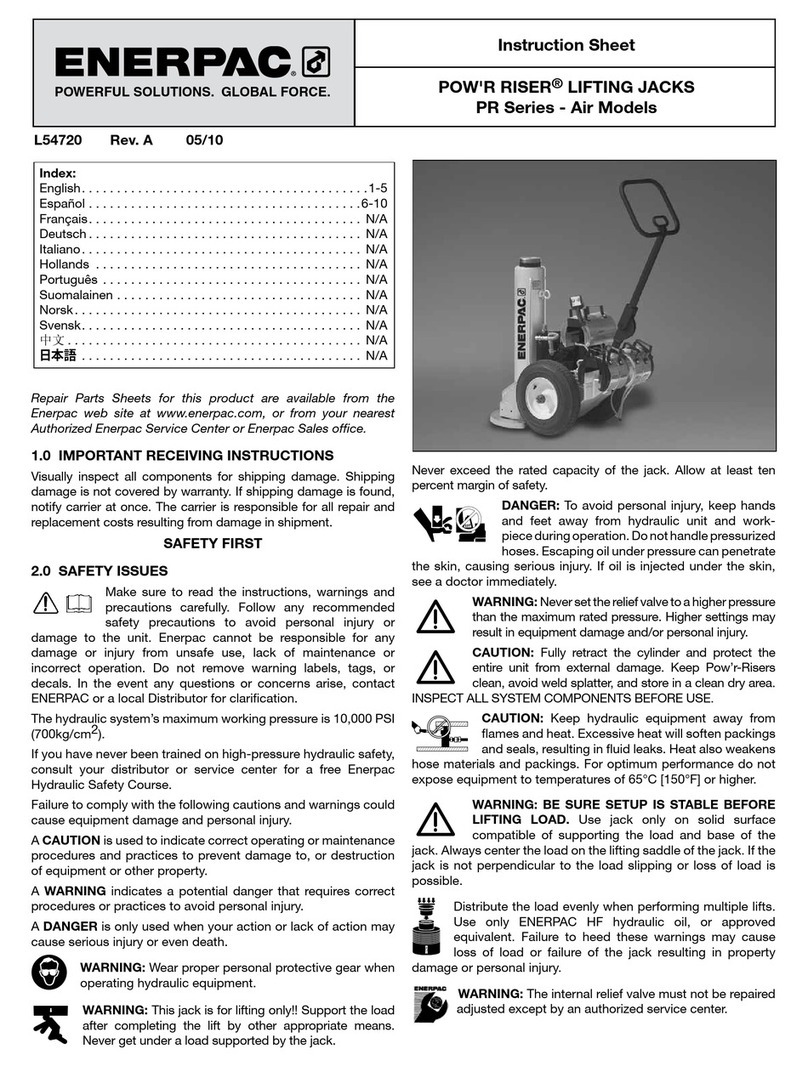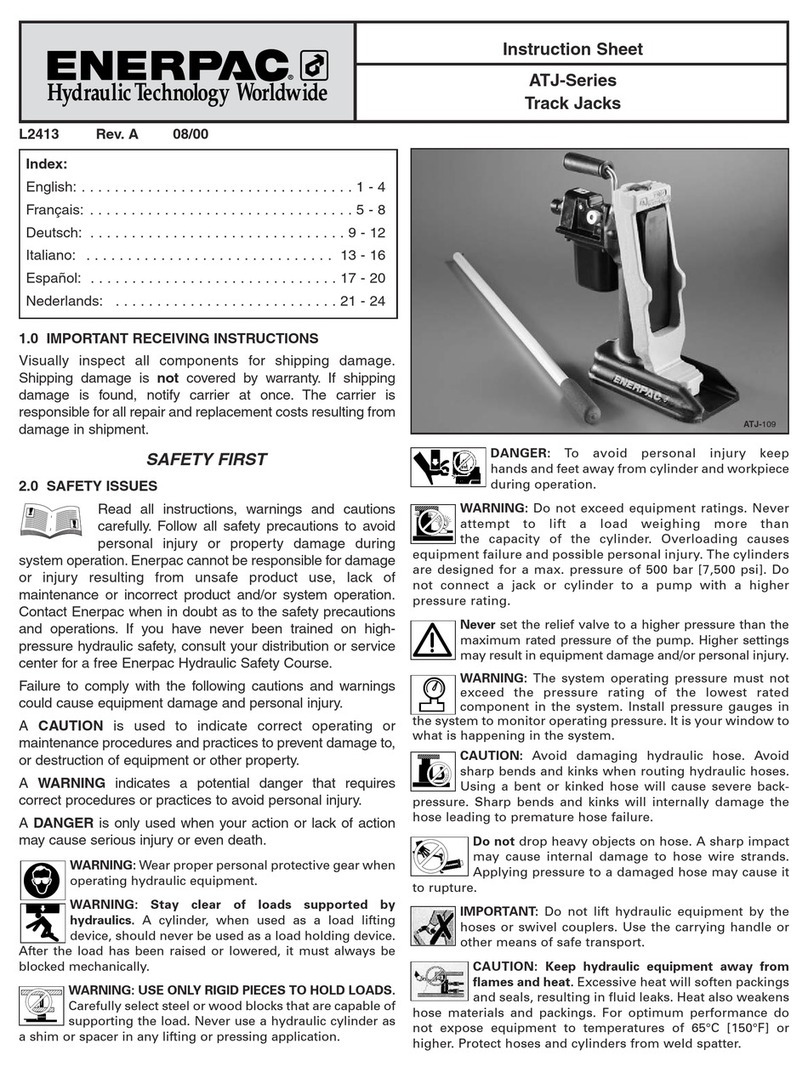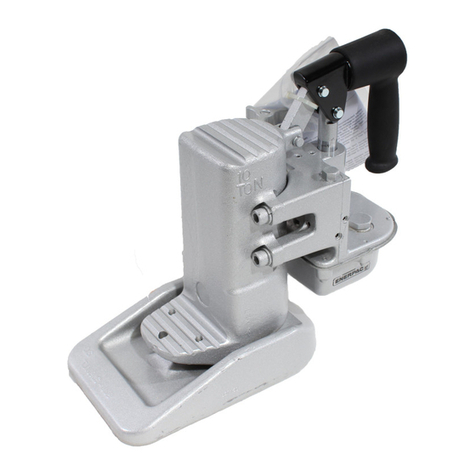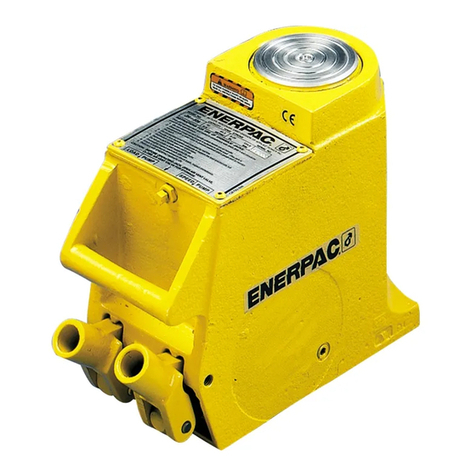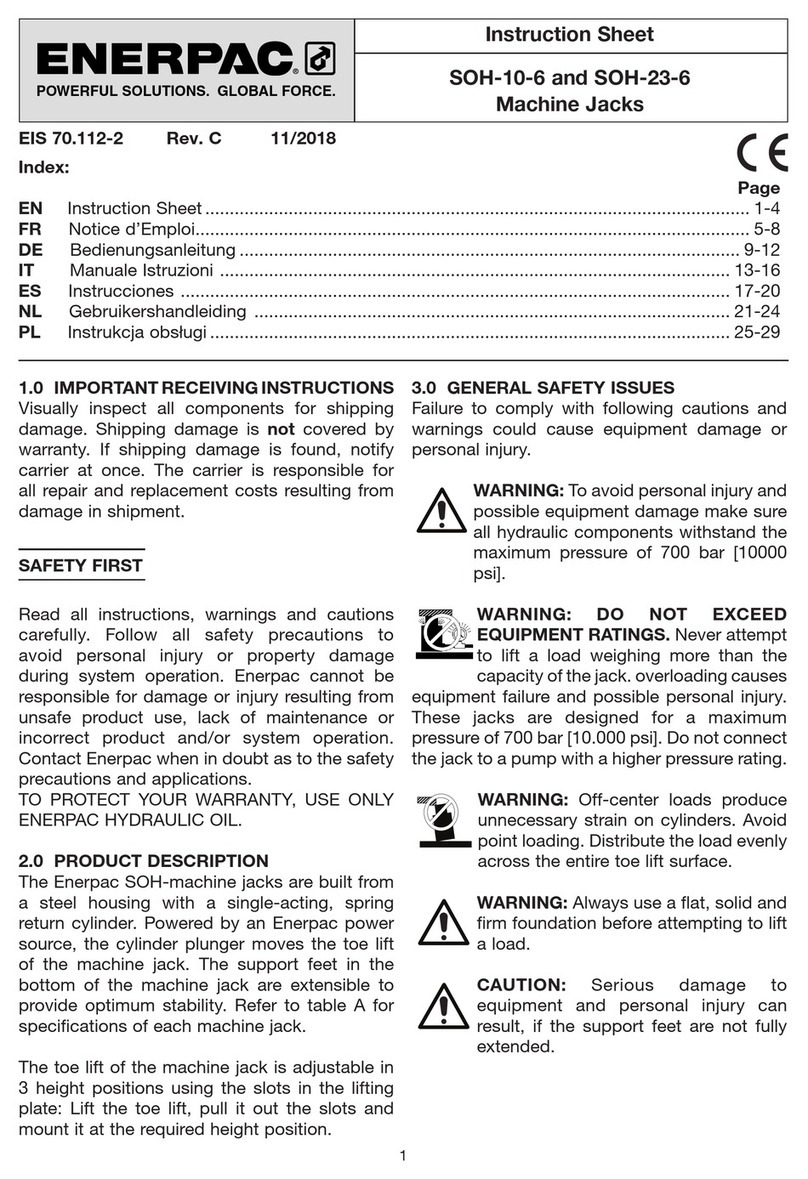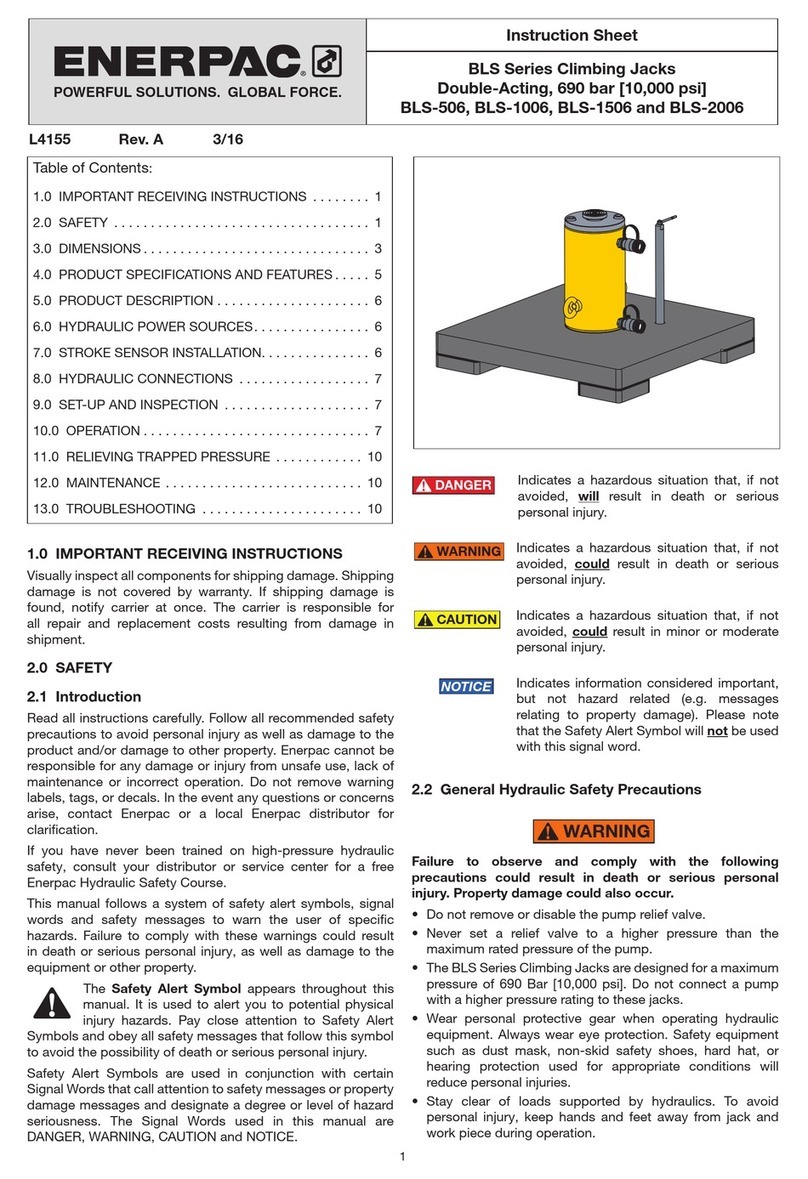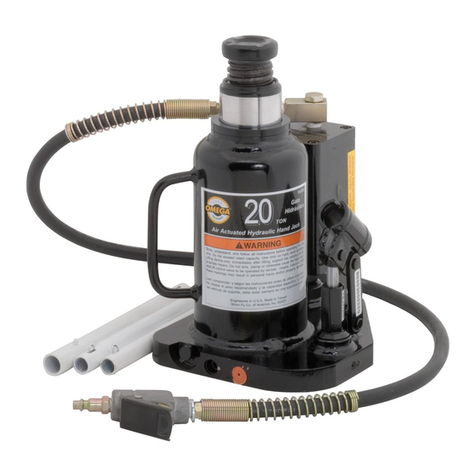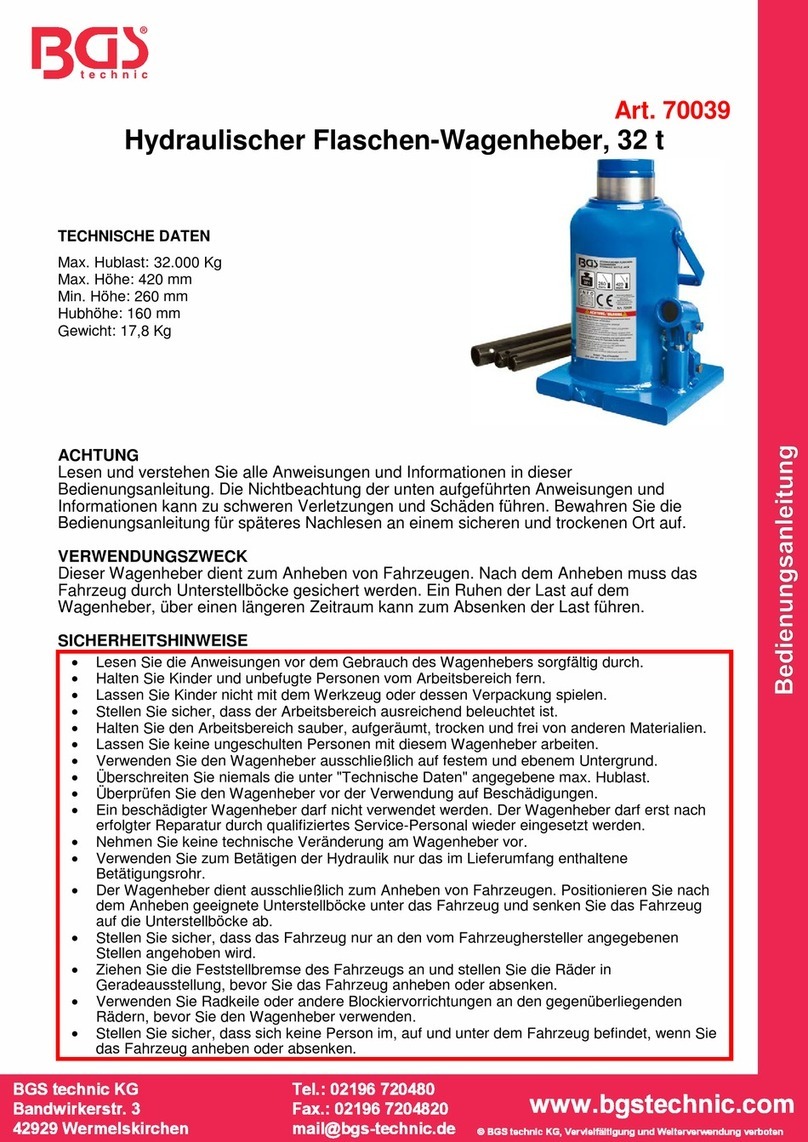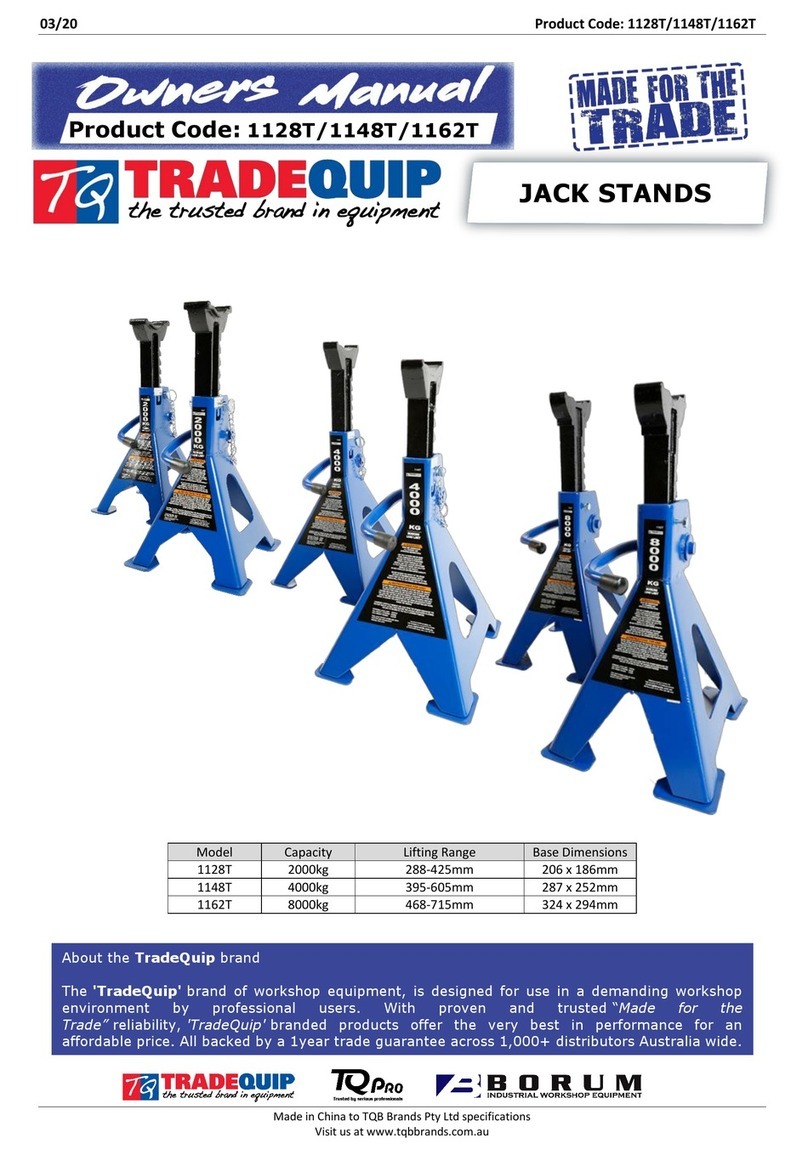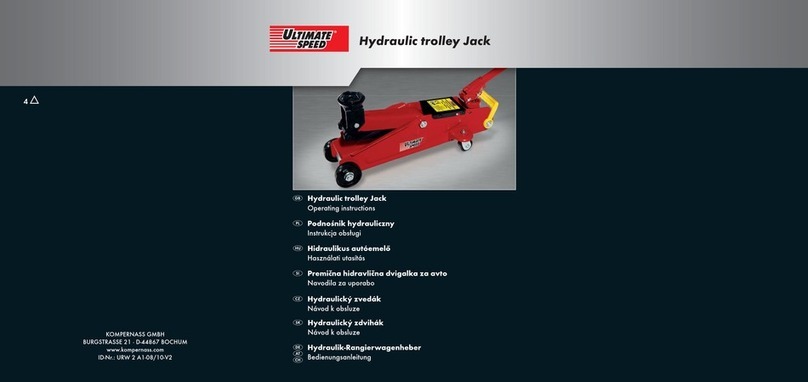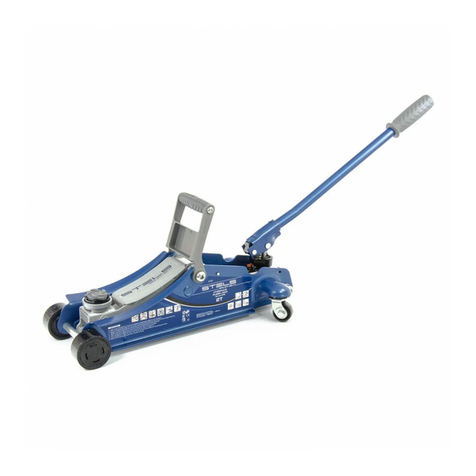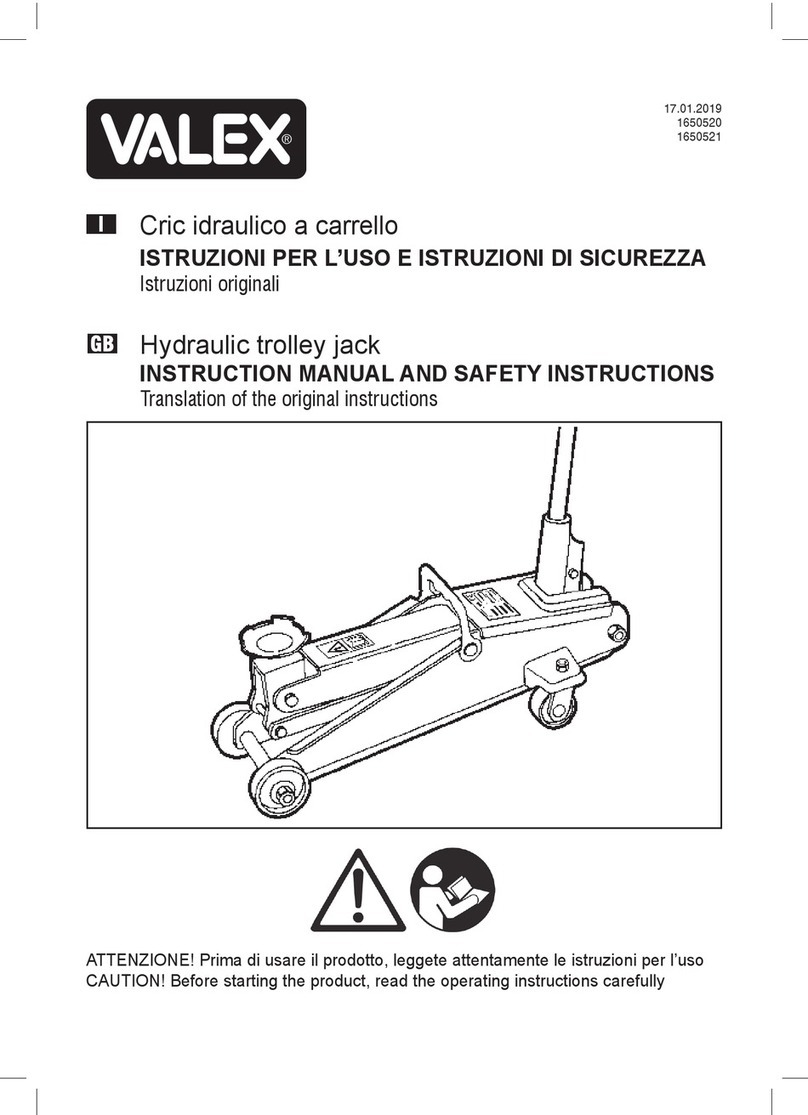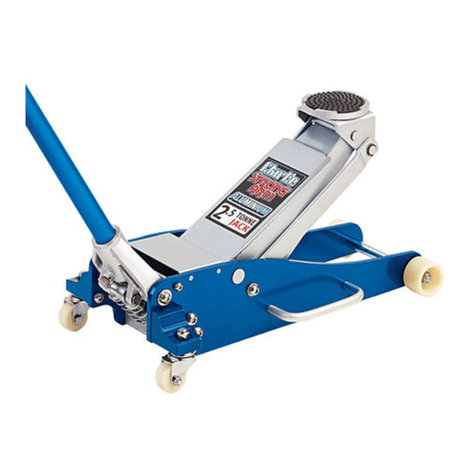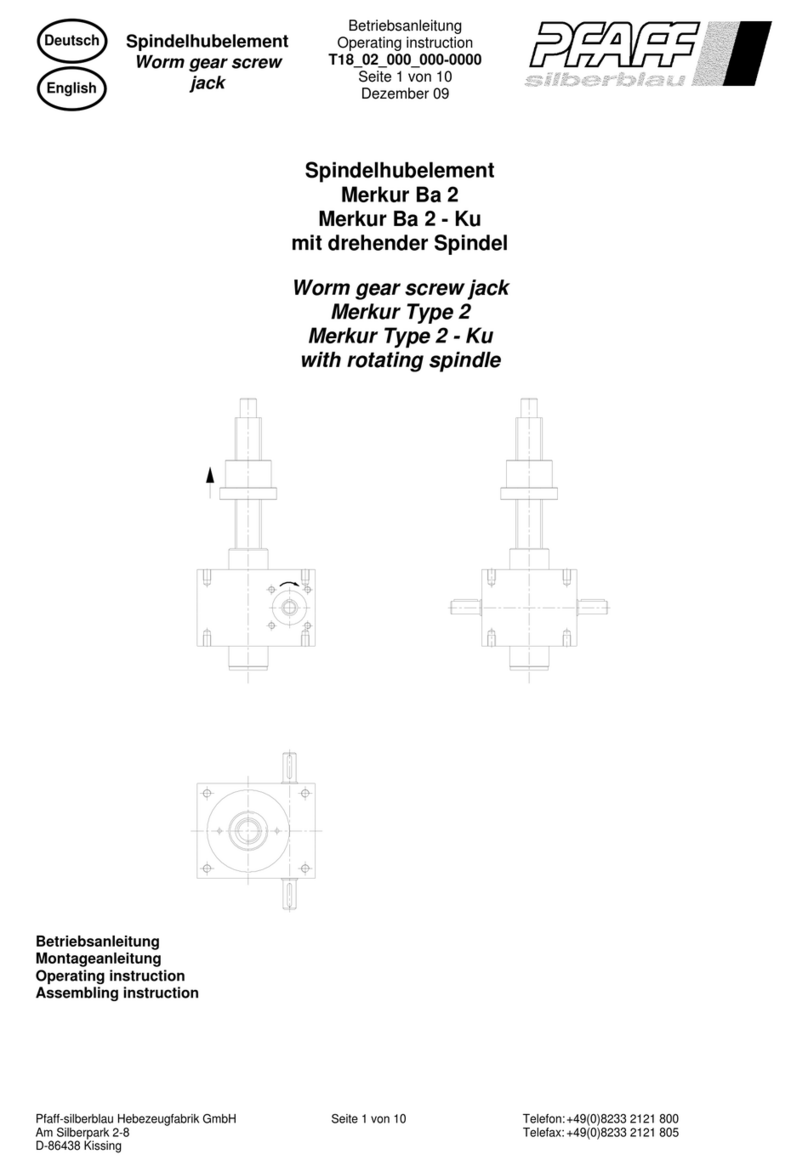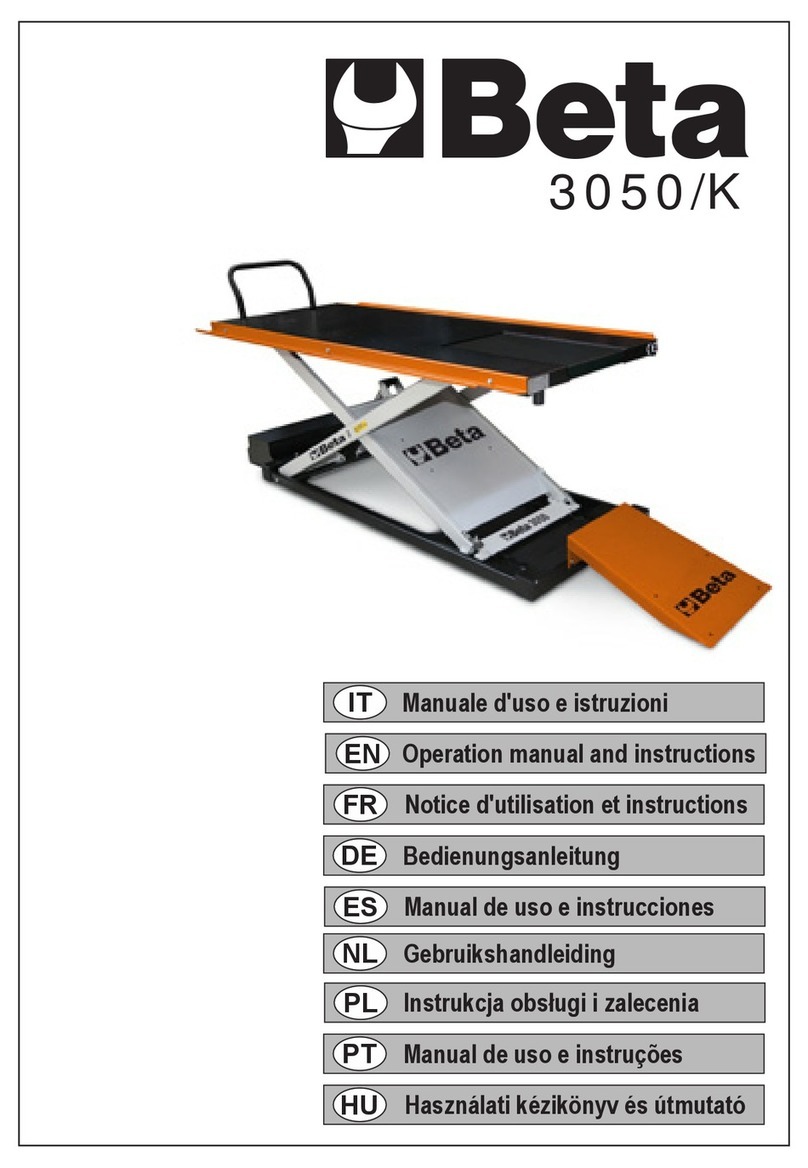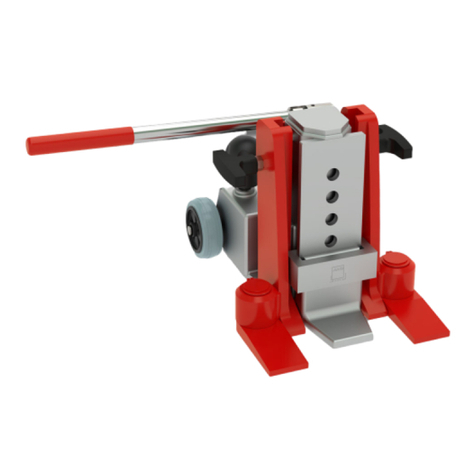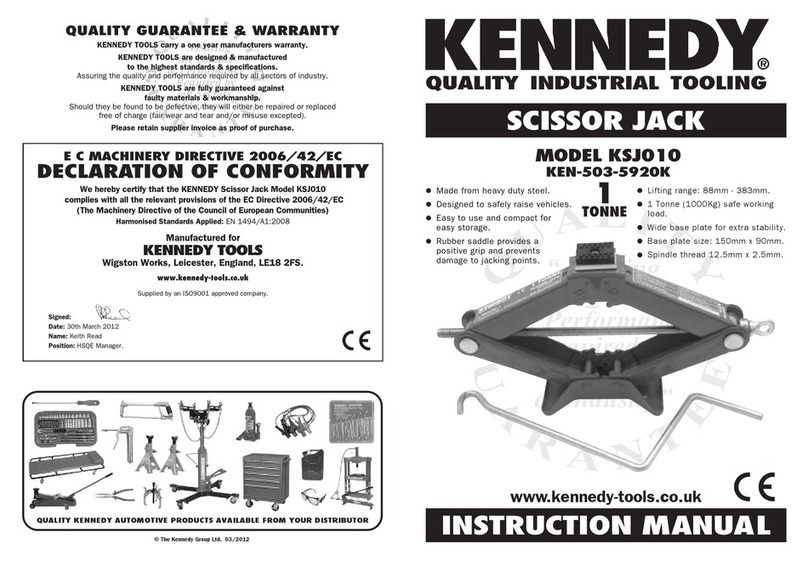8
2. A veces, el gato hidráulico se llena de aire durante el
embarque y no funcionará de manera adecuada.
3. Lubrique con cuidado todas las partes móviles del gato.
a. Levante la silleta a su altura total cerrando la válvula
de descarga y bombeando con la manivela.
b. Lubrique la superficie del ariete y todas las partes
móviles en la manivela y mecanismo de
levantamiento.
4. Revise para asegurar que el gato ruede libremente (si
está equipado para tal fin) y que la bomba funcione de
manera uniforme antes de ponerlo en servicio.
Reemplace de inmediato las partes desgastadas o
dañadas por Refacciones genuinas Enerpac Automotive.
5. El producto está fabricado de tal manera que acepta el
popular niple de aire NPT de 1/4". Cuando se instale el
niple NPT de 1/4", asegúrese que se use cinta o
compuesto de rosca cuando se dé servicio a
las conexiones.
6. Inspeccione antes de cada uso. No se use en caso de
que se observen componentes doblados, rotos
o rajados.
4.0 OPERACION
4.1 Levantamiento de la carga
1. Ensamble la manivela de tres piezas. Asegúrese que
los sujetadores del resorte estén alineados con
las ranuras.
2. Asegure la carga a fin de evitar cambios y movimientos
involuntarios.
3. Coloque el gato cerca del punto deseado
de levantamiento.
4. Cierre la válvula de descarga girándola en el sentido
de las manecillas del reloj hasta que esté
cerrada firmemente.
5. Asegure su carga con soportes para el gato.
PRECAUCIÓN: Use la manivela que viene con este
producto u otra manivela autorizada para asegurar el
funcionamiento correcto de la válvula de descarga.
No use una extensión en la manguera de aire ni en la
manivela de operación. Cuando se use para levantar el
vehículo, levante solamente en los puntos recomendados por
el fabricante y de acuerdo con los lineamientos publicados en
el manual del propietario de su vehículo. Siempre use
soportes del gato para sostener la carga inmediatamente
después del levantamiento.
6. Inserte y asegure la manivela en su manga. Bombeé
con la manivela o cierre la válvula de control del
levantamiento hasta que la silleta haga contacto con la
carga. Para finalizar la operación neumática,
simplemente libere el apriete en la válvula de control de
levantamiento. Nunca use cable, abrazaderas u otro
medio para desactivar el funcionamiento de la
válvula de control de levantamiento. El único medio
autorizado es el uso de la mano del operador.
7. Levante la carga a la altura deseada, después
transfiera la carga de inmediato a dispositivos de
soporte con valor nominal adecuado, como soportes
del gato.
ADVERTENCIA: Este es un aparato de elevación
únicamente. Está diseñado para levantar una parte o
todo el vehículo (una rueda o el eje) Es
responsabilidad del propietario mantener legibles y a la
disposición las etiquetas y el material con las instrucciones
Las etiquetas y manuales para reemplazos están a su
disposición en Enerpac Automotive. Si no se observan éstos y
todas las demás advertencias relacionadas con este producto,
se puede ocasionar la pérdida repentina de la carga levantada,
lesiones personales o daño a las propiedades.
4.2 Descenso de la carga
1. Levante la carga lo suficiente para poder quitar con
cuidado los soportes del gato.
2. Inserte la manivela en la válvula de descarga y gire
lentamente en el sentido opuesto a las manecillas del
reloj, pero sin exceder 1/2 vuelta. Si no se logra bajar la
carga, transfiérala con cuidado a otro dispositivo de
levantamiento y soportes del gato. Quite con cuidado el
gato afectado y después retire los soportes del gato.
Baje la carga de nuevo girando lentamente la válvula de
descarga, sin exceder 1/2 vuelta.
ADVERTENCIA: Asegúrese que el área esté libre de
herramientas y de personal antes de bajar la carga.
Las cargas con sacudidas dinámicas peligrosas se
crean cuando la válvula de descarga se abre y cierra
rápidamente cuando se está bajando la carga. La sobrecarga
resultante puede causar fallas en el sistema hidráulico, que
podría a su vez ocasionar lesiones personales graves y/o
daños a la propiedad.
3. Después de retirar el gato de debajo de la carga,
empuje el ariete y la manga de la manivela hacia abajo
para reducir la exposición al herrumbre y la
contaminación.
5.0 MANTENIMIENTO
Importante: Para proteger su garantía, use solamente aceite
hidráulico genuino de Enerpac. Un líquido incorrecto puede
causar una falla prematura del gato y la posibilidad de una
pérdida repentina e inmediata de la carga.
5.1 Adición de aceite
1. Con la silleta totalmente hacia abajo y el pistón de la
bomba totalmente retraído, coloque el gato en su
posición horizontal nivelada. Quite el tapón del orificio
de lubricación.
2. Llene hasta que el aceite llegue al nivel del agujero del
tapón. Vuelva a instalar el tapón del orificio de
lubricación.
5.2 Cambio de aceite
Para un mejor desempeño y mayor vida útil del producto,
cambie todo el suministro de líquido por lo menos una vez
al año.
1. Con la silleta totalmente hacia abajo y el pistón de la
bomba totalmente retraído, quite el tapón del orificio de
lubricación.
2. Coloque el gato sobre su costado y drene el líquido en
un recipiente adecuado.
